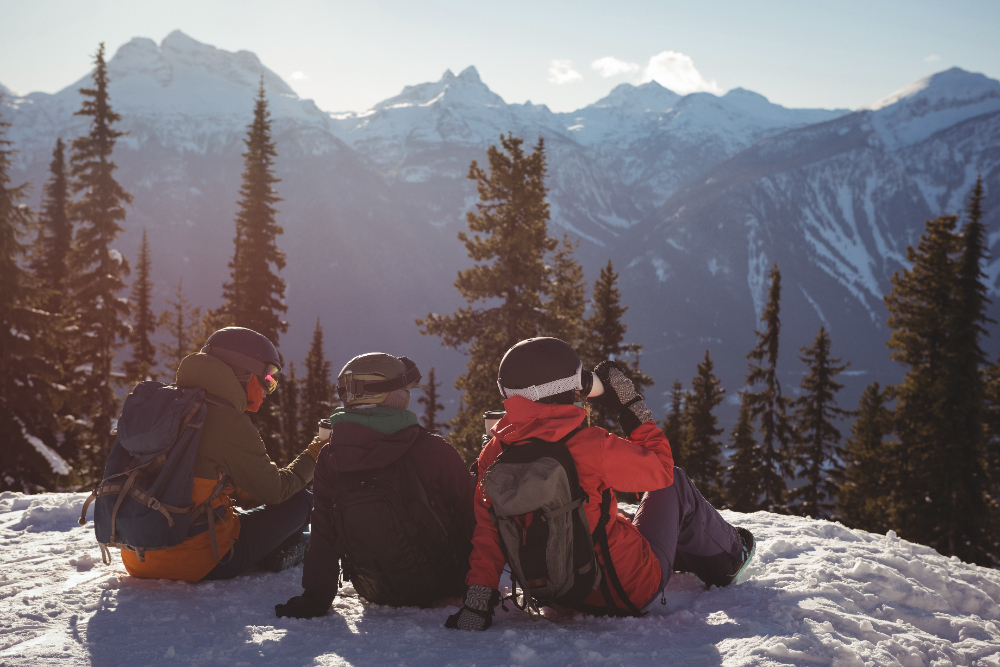The Icefields Parkway is renowned for its breathtaking landscapes, but beyond its natural beauty, it also holds a rich history waiting to be explored. Spanning 232 kilometers between Jasper and Banff, this route is home to historic sites that tell the story of early explorers, Indigenous peoples, and the formation of Canada’s national parks. Here are 9 historic sites you won’t want to miss on your journey.
1. Jasper House National Historic Site
Icefields Parkway Located near km 38, Jasper House was once an important fur trade outpost operated by the Hudson’s Bay Company in the 1800s. Though little remains today, the site offers an interpretive viewpoint overlooking the Athabasca River.
Why Visit:
Learn about the history of the fur trade in the Rockies.
Enjoy a scenic walk to the viewpoint.
Discover the role Jasper House played in Indigenous and European trade relations.
2. Athabasca Pass
Icefields Parkway This historic pass, located within Jasper National Park, was used by David Thompson in 1811 as he charted a route through the Rockies. It became a major part of early Canadian exploration.
Historical Significance:
Walk in the footsteps of early fur traders and explorers.
Visit the Athabasca Pass National Historic Site marker.
Learn about how this route shaped Canadian trade.
3. Sunwapta Station
Icefields Parkway Once a small settlement during the construction of the Icefields Parkway, Sunwapta Station served as a base for workers in the 1930s. While few remnants remain, its historic marker commemorates the challenges faced in building this legendary road.
Why It’s Worth a Stop:
Gain insight into the hardships of road construction in the Rockies.
Read interpretive signs about the 1930s development of the highway.
Appreciate the rugged determination of early road builders.
4. The Columbia Icefield Discovery Centre
Though primarily known for its modern-day attractions, this site has a fascinating history tied to early mountaineers and glaciologists. The Columbia Icefield itself was first explored by Europeans in the late 1800s.
Historic Highlights:
Learn about the first recorded ascent of the Athabasca Glacier.
See historical photos of early mountaineering expeditions.
Discover how glacial retreat has changed the landscape over time.
5. Saskatchewan River Crossing
This location was historically used by Indigenous groups and fur traders as a key crossing point for travel through the Rockies. The name comes from the North Saskatchewan River, which was an essential part of the fur trade route.
Reasons to Stop:
Visit the interpretive signs explaining the site’s history.
Imagine the journeys of voyageurs and Indigenous traders.
Take in the beautiful views of the converging rivers.
6. Howse Pass National Historic Site
Howse Pass, located just off the Icefields Parkway, was used by Indigenous peoples for centuries before becoming a major trade route for European explorers. Named after Joseph Howse, who crossed it in 1809, this pass played a significant role in Canada’s exploration history.
What Makes It Special:
Learn about the Indigenous trails that predate European exploration.
Understand its importance in fur trade history.
See how the landscape has remained largely untouched over time.
7. Num-Ti-Jah Lodge
Built in the early 1900s by Jimmy Simpson, a legendary guide and trapper, Num-Ti-Jah Lodge sits on the shores of Bow Lake. The historic lodge offers a glimpse into early tourism and mountaineering in the Rockies.
Historic Charm:
Walk through the rustic lodge and learn about its history.
Enjoy stunning views of Bow Lake and Crowfoot Glacier.
Read about Jimmy Simpson’s adventures as a Rocky Mountain guide.
8. The Big Hill & Big Bend
This historic section of the Icefields Parkway features one of the most challenging engineering feats of its construction. The steep descent and tight curves of the Big Bend showcase the difficulties workers faced in carving a road through the mountains.
Why It’s Significant:
Appreciate the skill required to build a road through this terrain.
Enjoy breathtaking views of the Saskatchewan River Valley.
Stop at pullouts to read about the history of the Parkway’s construction.
9. Lake Louise Train Station & Restaurant
Though technically just beyond the Icefields Parkway, Lake Louise Train Station is an essential historical stop. Built in 1910 by the Canadian Pacific Railway, it played a key role in bringing tourists to the Rockies.
What to See:
Explore the well-preserved train station.
Enjoy a meal in the historic railway dining room.
Learn about how the railway shaped tourism in Banff National Park.
Conclusion
The Icefields Parkway is more than just a scenic drive—it’s a journey through history. From Indigenous trade routes and fur trading posts to engineering marvels and historic lodges, each stop along the way offers a glimpse into the past. Whether you’re a history buff or simply curious about the stories behind the landscapes, these 9 historic sites provide a deeper appreciation of this iconic route.
FAQs
1. Are all these historic sites accessible year-round?
Not all of them. Sites like Athabasca Pass and Parker Ridge may be inaccessible in winter due to snow, while places like Jasper House and Num-Ti-Jah Lodge can be visited year-round.
2. Do I need any special permits to visit these sites?
A Parks Canada Pass is required to enter Jasper and Banff National Parks, but there are no additional fees for visiting these historic sites.
3. How long does it take to visit all 9 historic sites?
If you make short stops, you can see most sites in one full day. However, if you plan to hike at Athabasca Pass or Howse Pass, allow for extra time.
4. Can I stay overnight at Num-Ti-Jah Lodge?
Yes! Num-Ti-Jah Lodge offers accommodations, making it a perfect spot for a historic overnight stay along the Icefields Parkway.
5. What’s the best way to learn more about these historic sites?
Many of these locations have interpretive signs, and you can also visit visitor centers in Jasper and Banff to learn more about their historical significance.
Also read : Hotel Ibiti: 10 Essential Things to Pack for Your Visit




Leave a Comment